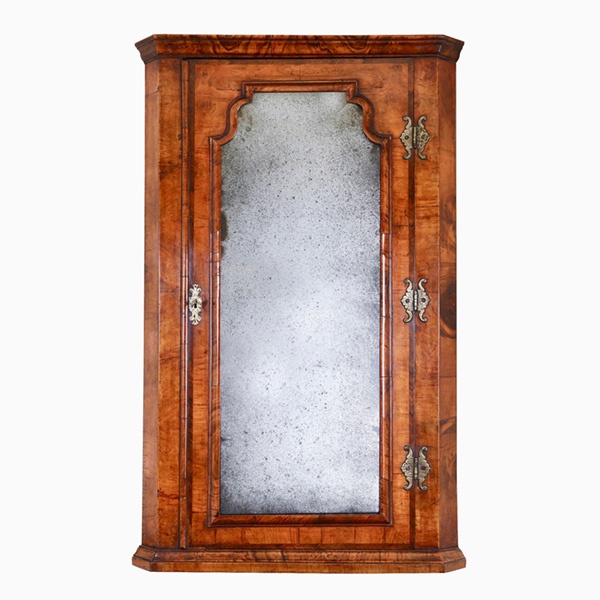A Fine William and Mary 17th-Century Olive Oyster Lace Box
Sold
Request Information
Follow Us
A Fine William and Mary 17th-Century Olive Oyster Lace Box
A Fine Late 17th Century Olive Oyster ‘Lace Box’ of Small Proportions. Circa 1680-1690 England.
The cross-grain moulded and holly banded top is finely veneered in hand-cut pieces of olive cut horizontally, known as ‘olive oyster veneering’. A roundel using this technique is placed in the centre of the top, bordered with a line stringing of holly, a further outer ring of oysters is also line strung and four large oysters sit to each corner. Raised on its original slot hinges, the cleated top appears to retain the original red japanned interior as does the base.
Similarly, the cross-grain moulded frieze is veneered in olive to the sides and face but, this time, hand-cut sections of figured olive. The back is veneered in lacewood. Raised on its original slot hinges the cleated top appears to retain the original red japanned interior as does the base.
Condition
Good. Wear consistent with age and use. Truly outstanding and original. Lovely colour and patination throughout.
Dimensions
Height: 3.15 in. (8 cm)
Width: 11.82 in. (30 cm)
Depth: 9.85 in. (25 cm)
PREVIOUSLY SOLD
No Results Found
The page you requested could not be found. Try refining your search, or use the navigation above to locate the post.
No Results Found
The page you requested could not be found. Try refining your search, or use the navigation above to locate the post.
YOU MAY ALSO LIKE

Pair of 18th-Century English Rococo Gilt Bronze Andirons or Firedogs
An exceptional pair of 18th century English Rococo gilt bronze andirons or fire dogs.
The bold shape of these andirons relate to designs of Thomas Johnson (1714–1778), one of London’s pioneers of the ‘Modern’ or French style, later known as Rococo.

Queen Anne Walnut Corner Cupboard with Bevelled Mirror Plate
A truly remarkable find in original condition. To the door a shaped soft bevelled mirror plate is framed by a cross-grain molding of typical queen Anne design which is further cross-banded, feather-banded and edged to the opening with a single de-molding.

Pair of 18th-Century English Rococo Gilt Bronze Andirons or Firedogs
An exceptional pair of 18th century English Rococo gilt bronze andirons or fire dogs.
The bold shape of these andirons relate to designs of Thomas Johnson (1714–1778), one of London’s pioneers of the ‘Modern’ or French style, later known as Rococo.

Queen Anne Walnut Corner Cupboard with Bevelled Mirror Plate
A truly remarkable find in original condition. To the door a shaped soft bevelled mirror plate is framed by a cross-grain molding of typical queen Anne design which is further cross-banded, feather-banded and edged to the opening with a single de-molding.









